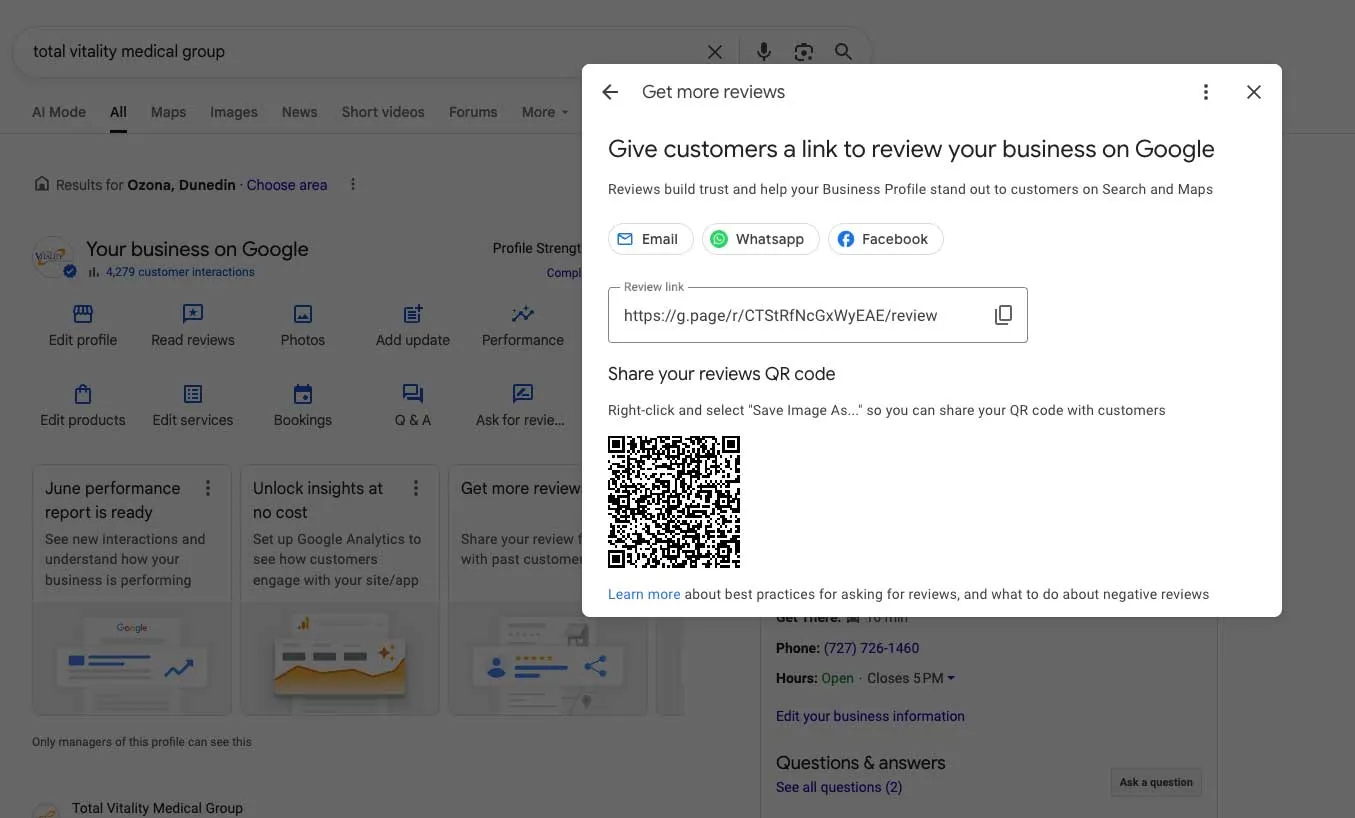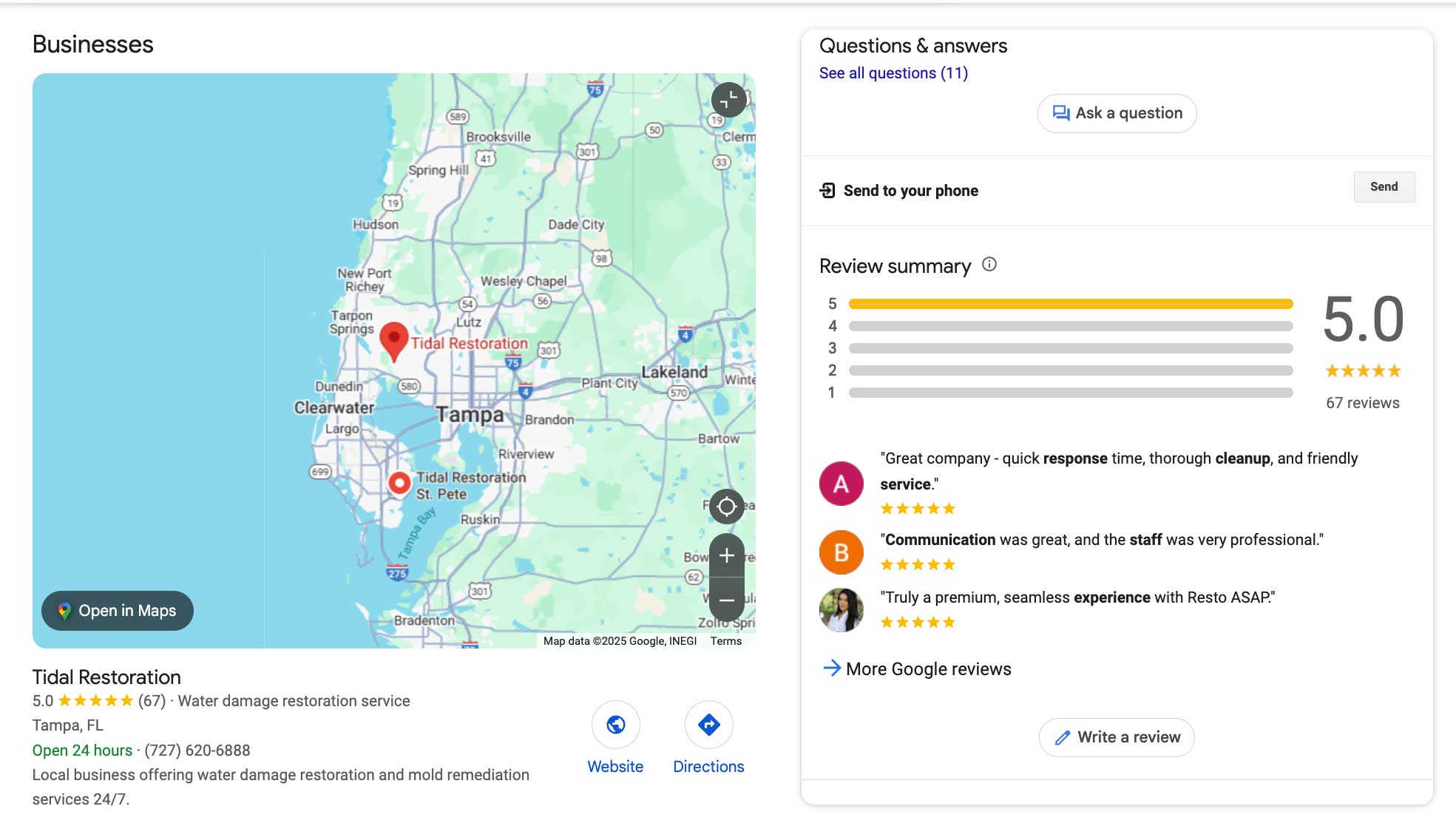
Why Customer Reviews Are a Technical Powerhouse for Local SEO
In the competitive world of local search marketing, customer reviews are more than just a pat on the back – they’re a technical asset that can directly influence your website’s visibility and ranking on Google. While positive reviews certainly boost your reputation with potential customers, they also feed Google’s algorithms with valuable data. In this in-depth article, we’ll explore why reviews matter for Local SEO from a technical perspective, beyond just goodwill or brand image.
Local SEO (search engine optimization) is all about optimizing your online presence to rank better for local-based searches (think “dentist near me” or “best pizza in [Your Town]”). Google’s system for ranking local businesses (the Local Pack/Google Maps results) uses a different blend of factors than general organic search. Customer reviews happen to play a critical role in this formula. Let’s dive into the technical reasons why.
Reviews as a Core Local Ranking Factor
Review signals (third from top) comprise roughly 15% of Google’s local “pack” ranking factors, according to industry surveys. Other major factors include Google Business Profile elements, on-page content, and link signals.

Google itself has confirmed that the quantity and quality of reviews directly affect local search rankings. In Google’s documentation on improving local rank, it states: “Google review count and score are factored into local search ranking: more reviews and positive ratings will probably improve a business’s local ranking.” In essence, businesses with a higher number of favorable reviews tend to outrank those with fewer or poorer reviews, all else being equal.
This isn’t just hearsay. According to Local SEO experts (via the respected Whitespark/Moz Local Search Ranking Factors study), review signals – which include factors like review count, review score, and review velocity – are consistently rated among the top ranking factors for the local pack. In the 2023 survey, having a high average star rating (4-5 stars) was considered the 6th most influential factor for local pack rankings, and the quantity of Google reviews (with text) was the 8th most influential factor. That puts reviews near the top of the priority list, even above things like many traditional SEO factors.
Prominence is one of the three pillars of Google’s local algorithm (along with relevance and distance), and reviews contribute massively to a business’s prominence online. A profile with 200 reviews will simply be seen as more established (and thus more prominent) than one with 5 reviews. Review quantity signals popularity and customer engagement, which Google’s algorithm interprets as a sign that your business is trusted and well-known in the community.
Review diversity is another aspect of prominence. This refers to accumulating reviews across multiple platforms, not just Google. For example, having reviews on Facebook, Yelp, TripAdvisor, and industry-specific review sites can bolster your business’s overall online presence. Google’s algorithm aggregates information about your business from across the web; a company with dozens of rave reviews on several reputable sites may enjoy a boost in local ranking due to its broad positive reputation. In short, the more places your business is positively talked about, the more “prominent” it appears in Google’s eyes.
Finally, review velocity (the pace at which you receive new reviews) feeds into this ranking signal. A steady flow of new reviews indicates your business is active and providing fresh customer experiences. Later in this article, we’ll discuss why recency matters – but keep in mind that Google’s local algorithm favors businesses that continue to earn feedback regularly (as opposed to those with a bunch of old reviews and no recent activity).
Keyword-Rich User Content Boosts Relevance

Customer reviews aren’t just numerical ratings – they’re also content. The text that customers write in their reviews can directly influence which searches your business is relevant for. Google’s indexing system reads those comments to understand more about what your business does and what it’s known for. In effect, your customers are providing free keyword-rich content that can help your SEO.
For example, imagine you run an HVAC repair company in Tampa, and a customer leaves a review saying: “Best HVAC repair in Tampa — they arrived on time and fixed our AC in one visit!” That single review just naturally incorporated keywords and location context (“HVAC repair,” “Tampa,” “fixed our AC in one visit”). Google can parse these phrases and associate them with your business, reinforcing your relevance for searches related to HVAC repairs in your area. Over time, as you accumulate many such reviews, you build a robust semantic footprint of the services and qualities your business is known for.
Google even uses review text in real time to help match and display results. One feature you may have noticed in local search results is review “justifications.” These are little snippets from a review that Google highlights in your listing if they match the user’s search query. For instance, if someone searches for “bathroom cleaning service” and one of your reviews mentions “…my bathroom and kitchen are sparkling clean now,” Google might show that excerpt right under your listing, with the keyword bolded. This acts as both a relevance signal and a credibility booster. It tells the searcher exactly why your business is a good match for their query, in the words of another customer.
Example of Google displaying review snippets (“justifications”) for a local search. The search query’s keywords are pulled from actual customer reviews, highlighting the business’s relevance for that specific service.
By encouraging your customers to leave detailed, keyword-rich reviews, you’re essentially performing a bit of SEO content creation – without writing a single word yourself. Ideally, reviews should mention the specific product or service the customer received, the problem that was solved, and even the location or staff involved. In fact, experts advise guiding customers (without directly coaching their exact words) to include specifics like the particular service they got, results or outcomes, and even photos if applicable. A diverse vocabulary in your reviews (e.g., synonyms and related terms for your services) can help your business appear for a wider array of long-tail search queries.
It’s worth noting that there has been debate about whether having certain keywords in reviews can directly boost your rankings for those keywords. Some experiments have been inconclusive on whether, say, a sudden influx of reviews mentioning “emergency plumber” will make you rank higher for “emergency plumber” searches. The consensus among many SEOs is that the act of getting new reviews (period) is definitely a positive ranking signal – and any keyword benefits are a bonus that likely reinforce the relevance your site/content already has. At the very least, what we do know is that Google’s natural language processing can interpret review text to understand more about your business, and it will highlight those terms to searchers when relevant. So there is clear value in having keywords and detailed info naturally sprinkled through your review corpus.
In summary, think of reviews as a continuous stream of user-generated content about your business. They keep your online presence fresh and semantically rich. Rather than static website copy that you have to update, your customers’ own words keep informing Google that “this business does X, Y, and Z, and people are happy about it.”
Higher Ratings = Higher Click-Through Rates (CTR)
Earning great reviews doesn’t just influence Google’s algorithmic view of you – it powerfully influences users’ behavior too. And user behavior, in turn, sends signals back to Google. One key aspect here is click-through rate (CTR) – the percentage of people who click your listing when it appears in search results. Reviews have a surprisingly large impact on CTR, which can indirectly boost your SEO performance.
When your business shows up in Google’s local results, it will typically display your star rating and review count right alongside your name. These stars immediately catch the eye. Humans are naturally drawn to social proof, and seeing a strong rating (e.g. 4.7★ with 100 reviews) makes it far more likely that a searcher will click your listing versus a competitor with, say, 3.8★ and 5 reviews. In fact, multiple studies have quantified this effect:
-
- A BrightLocal research study found that going from a middling 3-star average rating to a 5-star rating increased click-throughs from the local pack by about 25%. Even more stark, businesses with a 5-star average earned 39% more clicks from Google local results than those with a 1-star average.
-
- Similarly, having the eye-catching “gold stars” appear in your search snippet (in organic results, not just the map pack) can boost CTR significantly. One analysis reported that showing review stars in your Google result can improve click-through rate by as much as 35%. That’s a huge uptick in potential traffic, simply from displaying that social proof in advance.
Why does CTR matter for SEO? Google is tight-lipped about how exactly it uses user behavior in rankings, but many experts believe that a high CTR and good engagement can be positive ranking signals – especially in local search. If users consistently click on your result more than others, it’s a sign that your listing is highly relevant to their queries. Google’s local algorithm likely takes into account certain “behavioral signals” such as: clicks to call your business, clicks for driving directions, website clicks, and even whether searchers come back to the results or not. A well-reviewed business not only attracts more clicks – it often satisfies the user so they don’t pogo-stick back to search for alternatives. All of this can feed into better visibility.
Moreover, high ratings contribute to higher user trust and dwell time. If people see a stellar review profile, they may be more inclined to spend time reading your reviews, looking at your photos, and ultimately engaging with your Google Business Profile (GBP) – actions which indicate to Google that searchers are finding what they need with your business. By contrast, a poor rating might lead users to skip over you entirely, no matter how well optimized your SEO is.
There’s also a conversion aspect: Even if rankings stayed the same, what good is a high ranking if nobody clicks it? Reviews help ensure that when you appear, you actually get the traffic (or phone call). For instance, one study found that 77% of consumers won’t even consider a business with less than 3 stars and that conversions (actions like calls or directions) improve dramatically – on the order of a 44% higher conversion rate – when a business increases its star rating by just one whole star. This means that from first impression to final action, reviews are nudging customers down the funnel.
In short, earning great reviews isn’t just about looking good – it directly impacts user behavior in ways that can strengthen your SEO. High CTR and strong engagement tell Google that people prefer your business, which can lead to even better rankings over time (a virtuous cycle: higher ranking → more clicks due to good reviews → even higher ranking…). And even aside from ranking, more clicks and interactions mean more opportunities to win customers.
Utilizing Review Schema for Rich Snippets (Star Ratings in SERPs)
From a more technical implementation angle, there’s a way to leverage your reviews on your own website to enhance your visibility in organic search results. This involves using Schema markup (structured data) to inform Google about your reviews and ratings. When done correctly, this can cause Google to display those attractive ⭐ star ratings in your page’s search result snippet (known as a rich snippet).
Having star snippets appear under your website’s URL can significantly increase your organic CTR – as noted, up to 35% improvement in clicks – because your result visually stands out from competitors. It immediately conveys trust (“this site/product is rated 4.5 stars by users”) before they even click through.
To implement this, web developers can use the AggregateRating schema (part of Schema.org structured data vocabulary) on your webpages. For example, if you have a testimonials page or you showcase customer reviews on your site, adding the proper JSON-LD or microdata markup could enable Google to pick up on the average rating and number of reviews. Similarly, e-commerce sites use schema to display product ratings in search results. Even local businesses can benefit by marking up reviews of specific services or products they offer.
However, a word of caution: Google has cracked down on certain uses of review schema to prevent abuse. Notably, “self-serving” reviews (where a business marks up reviews about itself on its own site) are no longer eligible for rich review snippets. Google made this change to ensure authenticity – they won’t show stars for a LocalBusiness or Organization schema if the reviews are perceived as your own testimonials hosted on your site. In practice, this means you shouldn’t mark up generic customer testimonials on your homepage and expect star snippets. Google will ignore those for rich results.
So how can you still leverage schema? If you collect reviews for specific products or services you offer (and those reviews are about the product/service not the business itself), marking those up is allowed and can generate rich snippets. Additionally, third-party widgets that embed Google or Yelp reviews on your site won’t trigger rich snippets for the reasons above (Google sees that as self-serving). The key is to use schema in appropriate ways – for example, if you’re Visual Realm and have a page for “SEO Services” where you embed client reviews about that service, you could mark those as reviews of the “SEO Service” (as a thing) rather than of “Visual Realm” directly. This nuance can be technically tricky, but it’s the difference between Google showing stars or not. Always adhere to Google’s structured data guidelines to avoid any penalties.
When used properly, review schema is a powerful technical SEO tool. It bridges your reputation into your website’s search listings. A result with “★★★★★ (45 reviews)” under it not only draws more clicks but also sets a positive expectation even before the visitor lands on your page. It’s an advanced tactic, but one that underscores how reviews feed into SEO on multiple fronts – not just on Google Maps, but in classic search results as well.
Sentiment & Trust Signals to Google’s Algorithms
Beyond raw ranking formulas, think about the broader context: Google’s mission is to show searchers the best, most trusted options for their needs. Customer reviews are essentially crowdsourced trust signals. In the era of AI-driven algorithms and smarter search, Google is increasingly capable of extracting insights from large amounts of text – including the nuance and sentiment in reviews.

To be clear, Google’s core algorithms don’t literally “score” the emotion of each review in any simple way for rankings (and Google has stated that they do not use sentiment analysis as a direct ranking factor in organic search). Google likely won’t demote you just because you got a couple of unhappy reviews, nor promote you solely because someone said “excellent” five times. However, the overall sentiment profile of your reviews does matter in several indirect ways:
- Star Rating and Overall Sentiment: The clearest signal of sentiment is your average star rating. This influences ranking and filters. Google now automatically filters local results for searches with qualifiers like “best” or “top.” If your rating is below 4.0, your listing may be excluded from these filtered results.
- Advanced NLP (Natural Language Processing): Google’s AI models like BERT and MUM understand context and attributes in reviews. If many reviewers mention features like “vegan options” or “24/7 availability,” those phrases help Google associate your business with relevant search queries even if your website doesn’t explicitly state them.
- Quality Raters and E-A-T: Google’s Quality Rater Guidelines instruct human reviewers to assess a business’s reputation based on external reviews. This process supports the evaluation of E-A-T (Expertise, Authority, Trust). A pattern of strong, authentic reviews signals that your business is trustworthy.
- Justifications and Contextual Matches: Google may highlight snippets from your reviews that match search queries, helping your listing appear for a broader set of terms. For example, a review about “bridal makeup” may get you visibility for queries related to that exact service.
- Experience and Authority Signals: Descriptive reviews that showcase problem-solving, expertise, and successful outcomes build a narrative of authority. The more detailed and positive these are, the more your business stands out in both human and machine assessments.
In summary, reviews feed Google crucial data about trust and experience. They help the search engine differentiate between businesses that merely claim to be the best and those that are backed by customer experience. With advanced algorithms, this kind of user-generated content becomes a powerful layer of ranking and recommendation data.
Review Recency & Velocity: The Freshness Factor
One technical aspect of reviews that is sometimes overlooked is timeliness. Google’s algorithm loves fresh content in general (known as “Query Deserves Freshness”), and local search results are no exception. Review recency – how recently your business has gotten new reviews – can impact your local rankings.
Why does Google care? Because fresh reviews indicate an active, currently relevant business. A business with many recent reviews appears more trustworthy than one whose last review was two years ago. A steady stream of recent feedback shows Google (and users) that your business is delivering value today.
In contrast, stagnation in reviews can send negative signals. A competitor with fewer total reviews, but consistent new ones, may outperform you over time. Many local SEO experts observe that you need a continuous trickle of new reviews to maintain your edge.
Visual Realm has seen this in practice: clients who regularly earn fresh reviews maintain or improve rankings, while those who stop receiving feedback tend to plateau or decline.
However, beware of unnatural spikes in review activity. Earning 50 reviews overnight from newly created accounts may trigger Google’s spam detection and result in reviews being filtered or your profile being flagged. The goal is a natural, sustainable pace.
To keep review momentum, build review requests into your customer journey:
- Send follow-up emails or texts post-service
- Use QR codes at your location
- Include a “Leave a Review” button on your website
Google provides a short link to make it easy for customers to review you. This link can be shared via SMS, email, or social posts to simplify the process.
Recency also influences conversion rates. Many users sort by “newest” when reading reviews. If your latest feedback is 6+ months old, it creates doubt about your current quality.
In short, review recency and consistency are critical Local SEO levers. Don’t stop once you’ve reached a number you’re proud of — keep the momentum going.
Putting It All Together (Conclusion)
Customer reviews are not just fluffy testimonials to frame on your wall – they are integral to your Local SEO success from a technical standpoint. Think of each review as a multi-faceted data point: it boosts your prominence in Google’s eyes (ranking factor), enriches your business listing with keywords and context (relevance and content factor), improves how many searchers click and trust your listing (behavioral and conversion factor), and signals to both algorithms and humans that your business is legitimate and quality (trust factor).
At Visual Realm, we consider review management a core pillar of local search optimization. It’s not secondary or optional. Our technical SEO strategies always include a plan to generate, monitor, and respond to reviews. Why? Because even the most perfectly optimized website with all the right keywords and tags can struggle in local rankings if the business has a weak review profile. On the other hand, a business that shines in the review department can often overcome deficiencies in other areas. Reviews are effectively the crowd-sourced SEO boost that money can’t directly buy (at least, not without violating guidelines!). They have to be earned – and that earned credibility is something Google rewards.
To maximize the Local SEO benefit of reviews, here are some final technical tips and takeaways:
- Aim for high ratings and volume: There’s no magic number, but getting into the 4-star-and-up club is critical. Strive to have as many 5-star experiences as possible to buffer any occasional low ratings. Remember, high average ratings and lots of reviews correlate with better rankings.
- Keep the reviews coming: Don’t slack off after a good quarter. Consistency in new reviews will help you maintain ranking momentum. Set up automated but authentic ways to ask every happy customer for a quick review (email reminders, text messages, QR codes at checkout, etc.).
- Diversify your review presence: Primarily focus on Google reviews (since they directly impact Google’s local rankings), but secondarily encourage reviews on other relevant platforms. A business with a strong Google profile plus excellent Yelp, Facebook, or industry-site reviews will have an edge in overall online reputation – and some of those platforms’ pages may rank in organic results for your name as well.
- Leverage review content in your SEO: Mine your reviews for insights and even keywords. If you notice customers frequently praise a specific service or product, make sure your website’s content prominently features that service (and maybe even highlights some review quotes, marked up with proper schema). Use the language your customers use – it clearly resonates, and it’s likely what new searchers will also use.
- Respond and engage: This isn’t directly about ranking higher, but it’s worth noting – responding to reviews (especially negative ones) can strengthen customer trust and possibly improve your conversion rate. There’s evidence that businesses who respond diligently to reviews tend to see more engagement and even a bit of a ranking boost in some cases. At the very least, it improves perception, which can lead to more clicks and business. Google does highlight “Businesses that respond to reviews” as a best practice.
- Monitor your competition: Pay attention to how many reviews competitors in your area are getting. If they’re outpacing you significantly, they may eventually outrank you. There are tools (like Places Scout, mentioned in an SEL article) that can track competitors’ review growth. Use these insights to set goals – e.g., if the top competitor gets 5 new reviews a week, aim for 6+ reviews a week yourself if possible.
- Avoid review shortcuts: Never buy fake reviews or violate Google’s review policies (like incentivizing positive reviews with rewards). The risks far outweigh any short-term benefit. Google’s algorithms (and human moderators) are continually improving at detecting inorganic review patterns – for instance, Google reported removing millions of fake reviews in recent years with advanced AI. If you’re caught, you could incur penalties or lose all your reviews. It’s not worth it. Earn real reviews the right way.
In conclusion, customer reviews are a form of “code” for Google’s local ranking algorithm – a human-generated, constantly updating feed of information about how good your business is and what it does well. Tending to your reviews should be as routine as tending to your website or your storefront. It’s an ongoing investment in both your reputation and your SEO visibility. By viewing reviews not just as feedback but as a strategic SEO asset, you can outperform competitors who think of them as an afterthought.
Pro tip: Make it as easy as possible for customers to leave reviews. Use direct links, QR codes, and gentle reminders. The less friction, the more likely you’ll capture that positive sentiment online. And once those great reviews start rolling in, amplify them – share them on social media, showcase them on your site (with schema markup in place), and thank your customers for them. It all feeds the cycle of more visibility, more customers, and yes, more reviews!
Harness the technical power of reviews, and watch your local SEO climb to new heights. Your future customers are not only reading these reviews – they’re using them to find you in the first place. Don’t miss out on this low-hanging fruit of local search success.
References
- Google Business Profile Help – “Google review count and score are factored into local search ranking. More reviews and positive ratings will probably improve a business’s local ranking.”
- GMBapi (Sophie N.), “Ultimate Guide to Google Local Search Ranking Factors,” – According to Whitespark’s Local Search Ranking Report, review signals contribute to ~17% of local pack rankings.
- SOCi Local SEO Statistics 2024 – Local SEO experts rank “High numerical ratings” as the 6th most influential local pack factor and “Quantity of Google reviews (with text)” as 8th.
- Widewail Local SEO Guide – Moz determined that review quantity, diversity, and velocity account for ~15% of Google’s local pack ranking factors (3rd highest factor, just behind link signals).
- Search Engine Land (Rule, 2025) – Detailed reviews help with “justifications” in search results (Google highlighting keywords from reviews). Fresh reviews are a ranking signal; maintain a steady stream to keep your 3-Pack rankings.
- BrightLocal Consumer Review Study (2017) – Going from a 3★ to 5★ rating yields ~25% more clicks from the local pack. A 5★ business gets ~39% more clicks than a 1★ business in local results.
- Different Perspective Blog – Showing review stars in organic search snippets can boost CTR by up to 35%, according to a CXL Institute study.
- Google Search Central Blog (2019) – Google’s update on review rich results: “Self-serving reviews are no longer displayed for LocalBusiness and Organization schema types.”
- Search Engine Journal (Southern, 2022) – Google does not use textual sentiment analysis as a direct ranking factor in organic search; however, positive reviews and ratings are a factor in local SEO rankings (confirmed by Google’s local algorithm behavior).
- Search Engine Land (Rule, 2025) – Businesses with <4.0 stars are filtered out for searches with “best”/“top”. Keeping at least a 4.0 rating is necessary to appear in “best [service]” queries.


